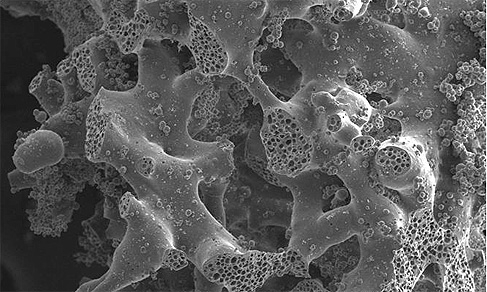
Materials with adaptable properties, like those of wood and bone, can provide safer structures, save money and resources, and reduce their environmental impact, claim the team at Johns Hopkins University. A report of the findings has been published in Advanced Materials.
Self-healing thermoelectric material adds durability to wearables
"Imagine a bone implant or a bridge that can self-reinforce where a high force is applied without inspection and maintenance. It will allow safer implants and bridges with minimal complication, cost and downtime," said Sung Hoon Kang, an assistant professor in the Department of Mechanical Engineering, Hopkins Extreme Materials Institute, and Institute for NanoBioTechnology at JHU.
Bones use cell signals to control the addition or removal of minerals taken from blood around them. Inspired by these natural materials, Kang and colleagues sought to create a materials system that could add minerals in response to applied stress.
The team started with materials that convert mechanical forces into electrical charges as scaffolds that can create charges proportional to external force placed on it. The team's hope was that these charges could serve as signals for the materials to start mineralisation from mineral ions in the environment.
Kang and colleagues immersed polymer films of these materials in a simulated body fluid mimicking ionic concentrations of human blood plasma. After the materials incubated in the simulated body fluid, minerals started forming on the surfaces. The team found they could control the types of minerals formed by controlling the fluid's ion composition.
The team then set up a beam anchored on one end to gradually increase stress from one end of the self-reinforcing materials to the other and found that regions with more stress had more mineral build-up; the mineral height was proportional to the square root of stress applied.
The researchers claim their methods are low-cost and don't require extra energy.
"Our findings can pave the way for a new class of self-regenerating materials that can self-reinforce damaged areas," Kang said in a statement. Kang hopes that these materials can someday be used as scaffolds to accelerate treatment of bone-related disease or fracture, smart resins for dental treatments or other similar applications.


Project to investigate hybrid approach to titanium manufacturing
What is this a hybrid of? Superplastic forming tends to be performed slowly as otherwise the behaviour is the hot creep that typifies hot...